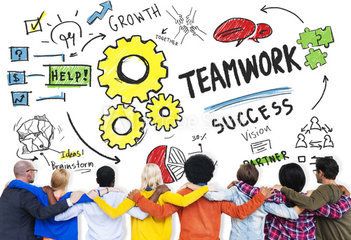
Does your company promote a positive work culture? Do you consider yourself a person who acts with kindness and positivity? Today’s high stress work environment is taking a negative toll on our overall well-being. We spend more time working than we do anything else. It is becoming more important now to pay attention to how we treat each other whether at work, home or at the grocery store. As a team and culture specialist, how we interact at work has consequences on our well-being.
Leaders may set the tone; however, employees also contribute to how the culture is shaped – it’s created by the people who work in it. It begs the question, how are you contributing? Are you showing up with a positive or negative attitude? Do you treat your fellow employees with respect? Wharton professor Adam Grant, author of Give and Take, explains that leader kindness and generosity are strong predictors of team and organizational effectiveness.
Over the past few years, increased research shows positive environments produce positive benefits specifically to engagement, relationships, health and the bottom line. Conversely, one of the biggest downfalls to a negative or fear-based environment is higher health care costs due to workplace stress and lower engagement. According to the Gallup Organization, disengaged workers had 37% higher absenteeism, 49% more accidents, and 60% more errors and defects. In organizations with low employee engagement scores, they experienced 18% lower productivity, 16% lower profitability, 37% lower job growth, and 65% lower share price over time.
This in turn typically results in higher turnover. Furthermore, the repercussions of disengaged employees have long term effects on the employees and business. Over the past twenty years, I’ve had the opportunity to go into many organizations and help with team effectiveness, workplace culture and engagement. As a leader, creating a positive and healthy culture for your team is vital to the success of the organization.
Based on research and my experience, here are a few key ways that can improve your workplace environment.
- Promote positive communication - treat each other with kindness, respect, and appreciation
- Increase awareness – notice how your attitude and actions are showing up at work
- Be supportive – offer to help, notice when someone is having a bad day or not feeling well and be compassionate
- Provide a sense of purpose – employees want to know their job is meaningful and that they are valued
- Foster team spirit by focusing on strengths – learn and leverage the strengths of your team members
As a manager or leader, what can you do to encourage this positive behavior? Here are a few tips to try:
1. Model positive and respectful behavior in your interactions - Be accountable, don’t play the blame game, encourage an environment where it’s okay to make mistakes and move forward
2. Show your gratitude and appreciation -send a thank you note or say it during a meeting
3. Celebrate wins – look for ways to celebrate whether it’s an employee birthday or recognizing a milestone or achieving a goal. Honoring wins and milestones improves morale by encouraging the person recognized and showing team members that important events are noticed and praised.
4. Listen - be open and encouraging to hearing other’s opinions, ideas and solutions without judgment. This encourages employees to speak up and feel heard and a valued member of the team.
5. Communicate often – keep employees in the loop with frequent updates. This helps keep people connected and feeling part of the larger team. Provide regular feedback including constructive feedback and not just at performance review time. Employees want to know how they are doing along the way.
6. Create clear goals. Employees like to know that the job they are doing is making a difference. By creating goals and how each person is responsible for achieving them, it motivates and inspires an air of striving for betterment in the workplace.
7. Foster collaboration and diversity. Teams are at their best when they are able to make the best use of the strengths and welcome different perspectives, ideas and opinions of their team members to extract the best solution or result.
In summary, the benefits of a positive workplace culture grow exponentially over time and produce continued results. Positive emotions or energy is contagious as is the negative. So, when leadership is focused on building a kinder, encouraging and engaged environment, it increases positive emotions and better health. People’s relationships improve fostering more collaboration and team spirit. In turn, this safeguards against stressful situations and negative experiences. It also helps to improve employee resiliency to deal with challenges while boosting their well-being. When organizations develop positive, kind cultures they achieve significantly higher levels of organizational effectiveness — including productivity, customer satisfaction, employee engagement and to the bottom-line. How can you spread a little kindness today?
About the Author: Michelle Burke is a Communication, Workplace and Team Strategist, published Author and Speaker. She is Founder and President of The Energy Catalyst Group dedicated to helping create more energized and positive teams, making work more enjoyable and organizations more successful. Her years’ experience working with Fortune 100, 500 companies, established her as a leading expert in bridging communication, gender and cultural gaps. Michelle consults with HR and leadership to focus on increasing individual, team and organizational energy. She collaborates with clients using her 3-A Model: Awareness, Accountability and (purposeful) Action and Energy Impact Model™. Clients include Stanford University, Visa, Disney, Receptos, Genentech, Sony PlayStation and Snapchat. Michelle authored, The Valuable Office Professional, and was featured in Business Week’s Frontier Magazine, LA Times, SF Chronicle, and Wall Street Journal. Her articles have been in Training, HR, and Chief Learning Officer Magazines. She also co-created Personalogy®, Amazon’s Top 100 Best Selling Card Games of 2015 and Dynamizer®, a strengths-based educational tool for young people. Please connect with her Michelle@energycatalystgroup.com.
